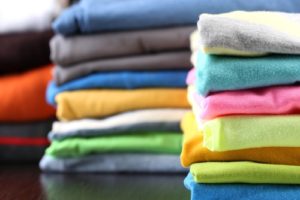
Dyes Used In Fabrics
Dyes are substances that add color to textiles. They are introduced to fabrics by means of chemical reaction, dispersion or absorption. There are a few factors that distinguish dyes from one another, such as reaction to cleaning agents, and resistance to a of things including perspiration, sunlight, washing, alkalies, gas, and other agents. Dyes are also different in terms of affinity for different fibers.
Fabric wholesalers employ different dyes to apply their preferred through textile printing. Below are a few types of dyes which are commonly used in the textile industry.
Natural Dyes
Natural dyes contain different naturally obtained substances that aid in the process of printing dyes on to the textiles. For example, starch was once used as a thickening agent in preparing the printing paste for textile printing. Such an agent is added to a small amount of water, before dissolving the dye in that solution. Nowadays, alginates obtained from seaweeds or gums are used for this purpose, as they offer better penetration of color, as well as ease of cleaning.
Synthetic Dyes
Synthetic dyes are chemically synthesized dyes. They are classified based on chemical composition and method of application.
Acid Dyes
Acid-based dyes are used on animal fibers, wool, and a few manufactured fibers. These dyes are commonly used on nylon, which requires high washing fastness, or “washfastness”. In other situations, higher washfastness is attained by treating with fixatives. They are not used with cotton or linen, since that would require a mordant.
Direct (Substantive) Dyes
This class of dye imparts color to cellulose fibers without the presence of mordants. These are generally used to dye materials like cotton, nylon, rayon, silk, and wool. These dyes may not be the brightest, and have very low fastness to washing, but they are pretty fast to light.
Basic (Cationic) Dyes
Basic dyes are soluble in water, and are applied to acrylic fibers. These are always accompanied by a mordant, which are basically chemical agents used to form an insoluble bond between fabric and dye. Basic dyes are used to color categories of fabrics such as linen, polyesters, nylon, cotton, acetate, modacrylics, and acrylics. These are colored with the help of mordants. Barring acrylics, basic dyes do not work well with other fibers, as they are not fast to washing, light or perspiration. Hence they are used to provide after-treatment to fabrics that have been dyed with acid dyes.

